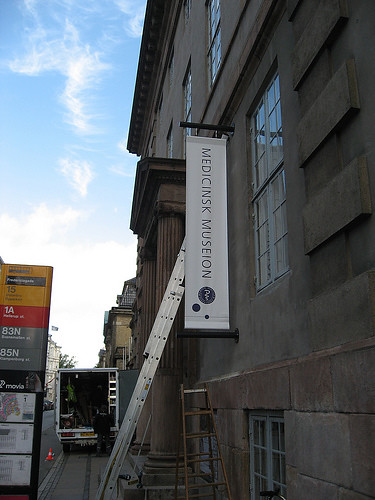
Fra uropførelsen af Labyrinthitis. Loftet i Medicinsk Museions auditorie med Jacob Kirkegårds højtalerinstallation
I september 2007 havde den danske lydkunstner Jacob Kirkegaard premiere på sit spektakulære værk ‘Labyrinthitis’ på Medicinsk Museion.
Værket var bestilt af Medicinsk Museion, og blev opført i auditoriet søndag den 2. september 2007. Senere har Jacob fremført ‘Labyrinthitis’ i Museum of Jurassic Technology i Culver City, September 2008.
Nu kan du købe ‘Labyrinthitis på CD fra TouchShop. Læs mere om værket på http://www.corporeality.net/museion/2008/10/25/music-from-the-inner-ear-2/

